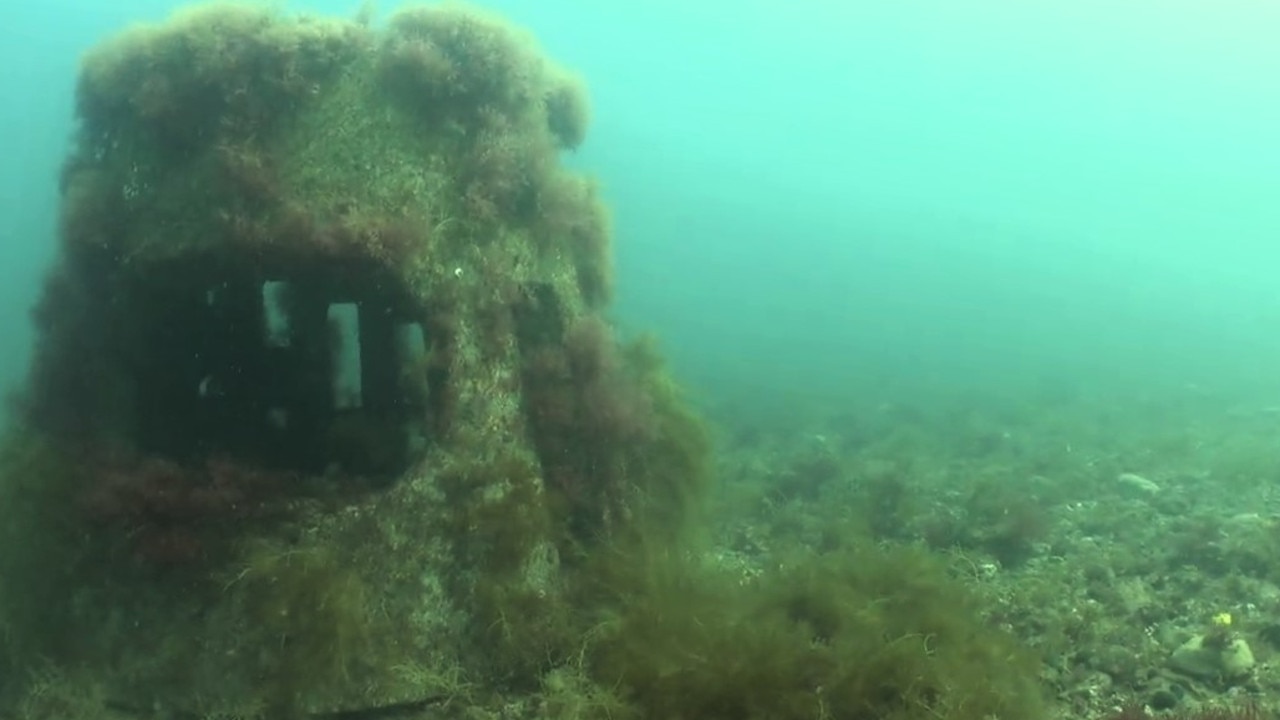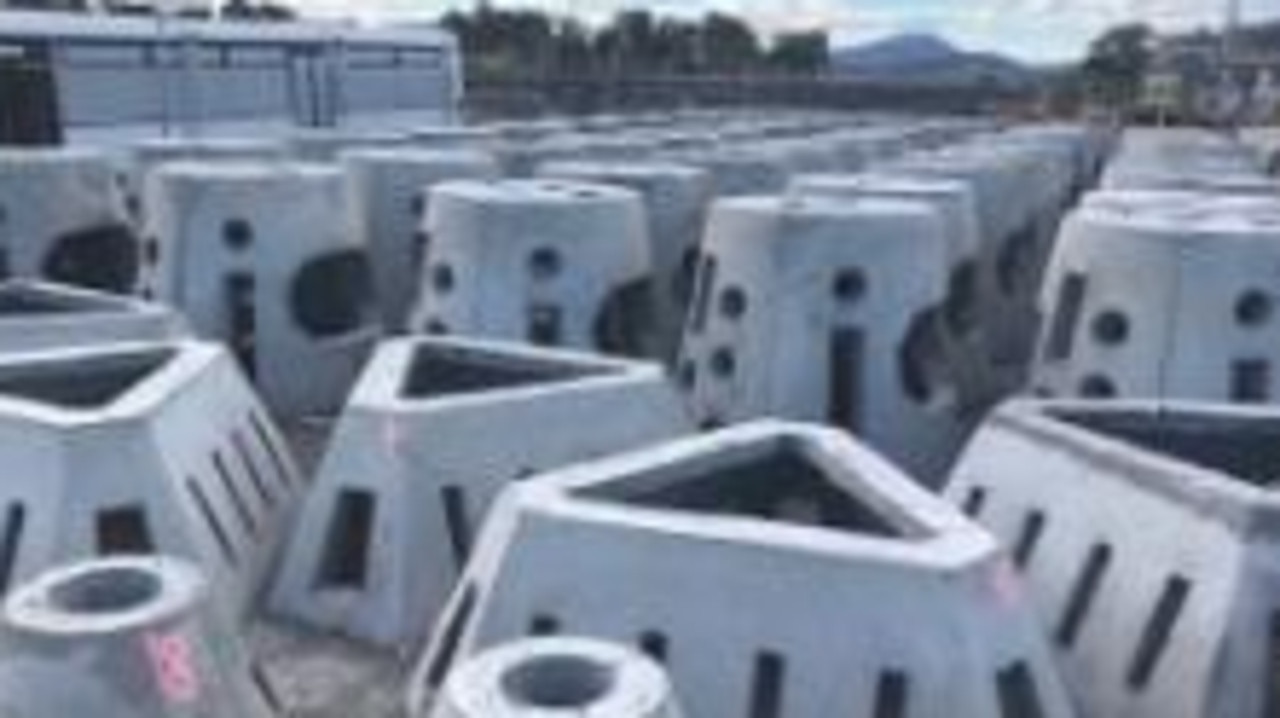Artificial reefs could boost fish numbers in Tasmania, study shows
Artificial reefs in Australia are being studied for their effect on fish numbers, with researchers and fishing enthusiasts hopeful the structures will encourage larger species to stick around longer

READING LEVEL: GREEN
Tasmanian researchers are studying the effect of “fake” reefs on fish numbers.
Two artificial reefs* have been created on the state’s north and south coastlines in the hope of boosting coastal ecosystems* and creating better fishing opportunities.
Researchers from the University of Tasmania’s Institute for Marine and Antarctic Studies (IMAS) installed artificial reefs in the D’Entrecasteaux Channel in 2022, and in 2023 off Turners Beach between Ulverstone and Devonport, as part of a partnership with the Tasmanian Government’s Fishing Tasmania department.
The reefs were installed in areas where there weren’t many natural reefs in the hope that the structures would encourage larger fish species to congregate*, providing more opportunities for recreational fishing.
The team placed around 150 concrete modules of different sizes and shapes at depths ranging from 10 to 15 metres below the surface to create the reefs.

IMAS researchers hope to return to the artificial reefs with a baited remote underwater video (BRUV) station or Remotely Operated Vehicles (ROVs) to capture each reef’s progress.
IMAS fisheries and aquaculture researcher Dr Sarah Ugalde said the project could help them “better understand what these artificial reefs bring to Tasmania and the benefits they provide for recreational fishers and other ocean users.”
“We have found a range of species around the reefs, including the occasional appearance of popular recreational species* like snapper,” Dr Ugalde said.
“As the reefs become more established, we may see their numbers increase and the possibility of settlement of benthic*, or bottom-dwelling, species like abalone*.
“By creating a habitat* for important fish species, the artificial reefs will support recreational fishing and will be accessible to fishers and divers, and other ocean enthusiasts.”

Dr Ugalde said more study and monitoring of the artificial reefs would help researchers understand how exactly the reefs contributed to the marine environment, ensuring the improvement of the modules in the future.
“At the moment, we don’t actually know what artificial reefs do for our unique fish species,” she said.
“This project will work out what benefits artificial reefs bring to Tasmania and ultimately, determine if they are a success.”
What the team learns could help them decide if they should install more artificial reefs in the future, she added.
Dr Ugalde said she hopes to film the reefs using a 3D camera to capture fish species and combine the footage with virtual reality (VR) headsets.
These assets could then be used alongside BRUV or ROV footage to monitor the ecosystems and species in and around the reefs.
POLL
GLOSSARY
- artificial reefs: human-made structures that mimic some of the features of natural reefs, creating habitats for marine life
- ecosystems: an area where plants, animals and other organisms work together with the landscape and weather and depend on one another for life
- congregate: group together
- recreational species: species of fish that are popular to catch when fishing
- benthic: at the bottom of the water or the depths of the ocean
- abalone: a large edible sea snail or mollusc that has a shell with a pearly interior
- habitat: where an animal lives
EXTRA READING
Government hands in Reef report
Golly goby! New fish found on Great Barrier Reef
How Tassie tigers will be reborn
QUICK QUIZ
1. Why are researchers installing artificial reefs on Tasmania’s coastline?
2. What are the reefs made out of?
3. How deep are they?
4. How will they be monitored?
5. What benefit could the reefs possibly bring for fishing enthusiasts?
LISTEN TO THIS STORY
CLASSROOM ACTIVITIES
1. Recreational fishing
What are the advantages of promoting recreational fishing to the environment and fish species numbers?
–
–
–
–
What benefits might fisherman, divers and other ocean enthusiasts get out of these artificial reefs?
–
–
–
Time: allow 20 minutes to complete this activity
Curriculum Links: English, Science, Personal and Social, Critical and Creative Thinking
2. Extension
How would you measure if this artificial reef is a success or failure? Think of and write some key indicators that could help the researchers evaluate the project.
Time: allow 10 minutes to complete this activity
Curriculum Links: English, Science, Personal and Social, Critical and Creative Thinking
VCOP ACTIVITY
Summarise the article
A summary can be a really good way to grab the main idea plus some key points in the article as a highlight. Think of the summary like a little advertisement or extract you could use to encourage people to read the article in detail. You want to give them an overview of the article that includes the main idea (being able to tell the audience what the article is about in one sentence), plus a few of the key points of the information.
Remember to re-read your summary to check that it is clear, concise and makes sense to the audience who haven’t read the article yet. You need to make language choices that allow you to explain the information in only a few sentences.


